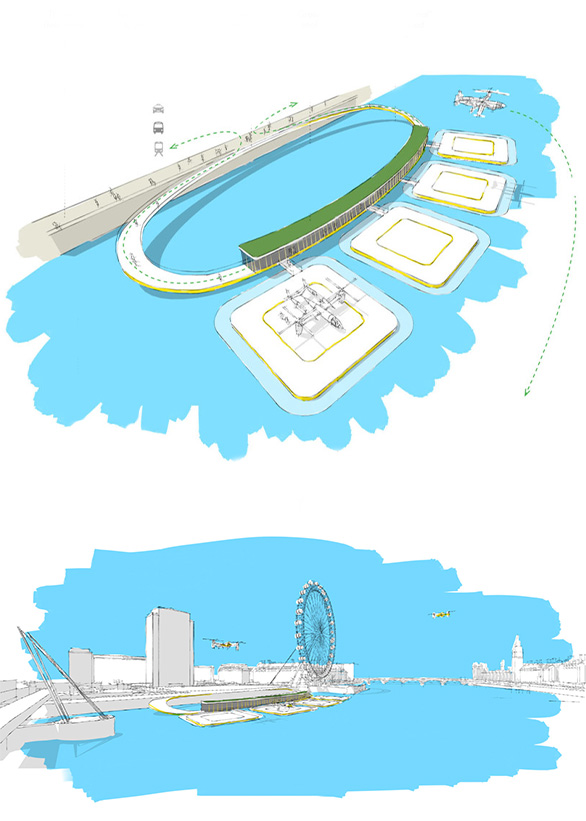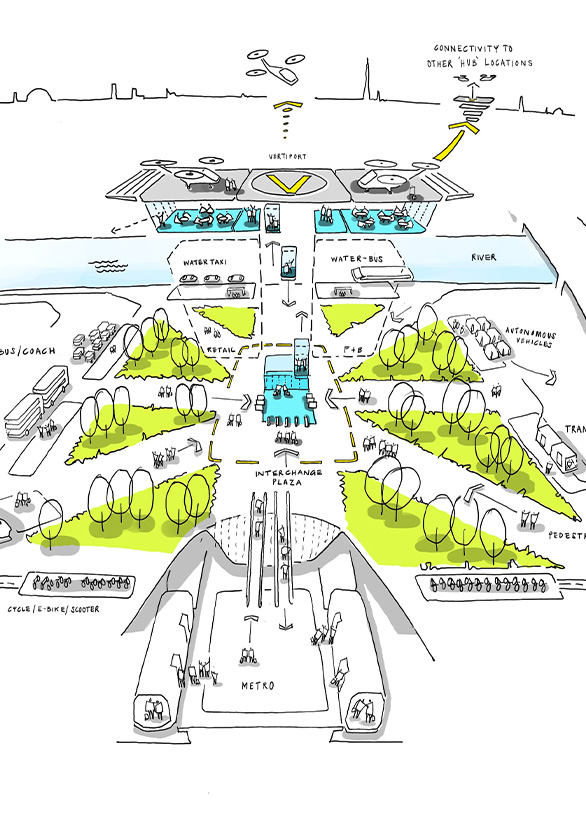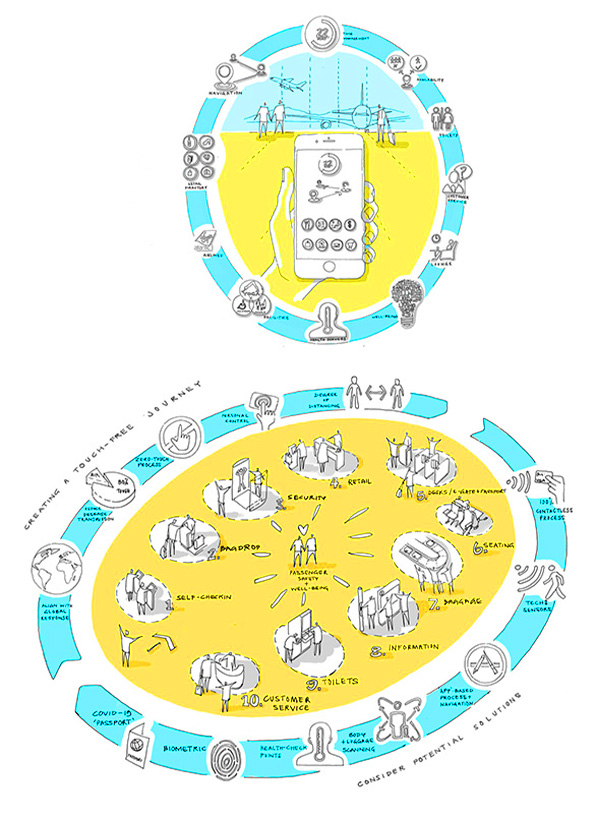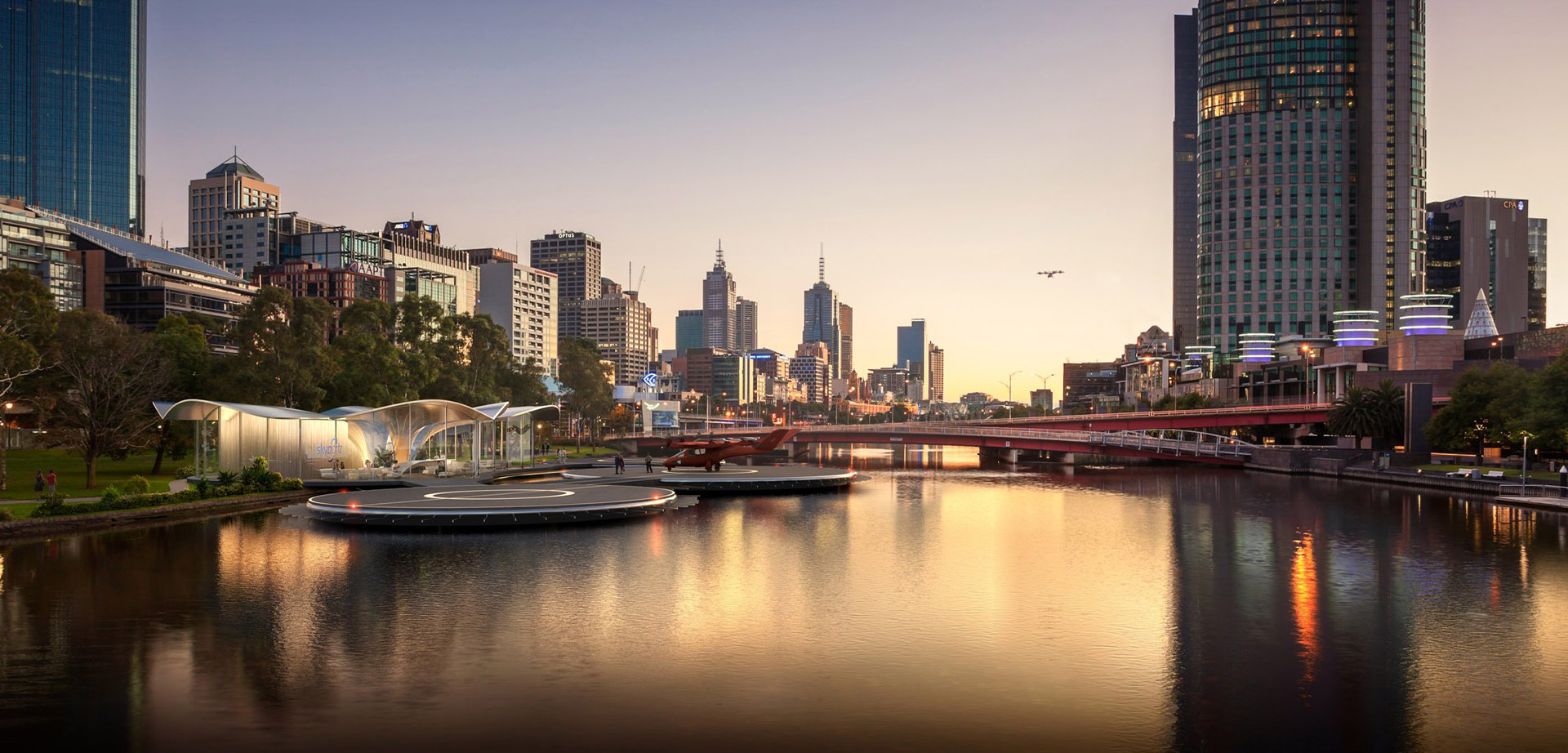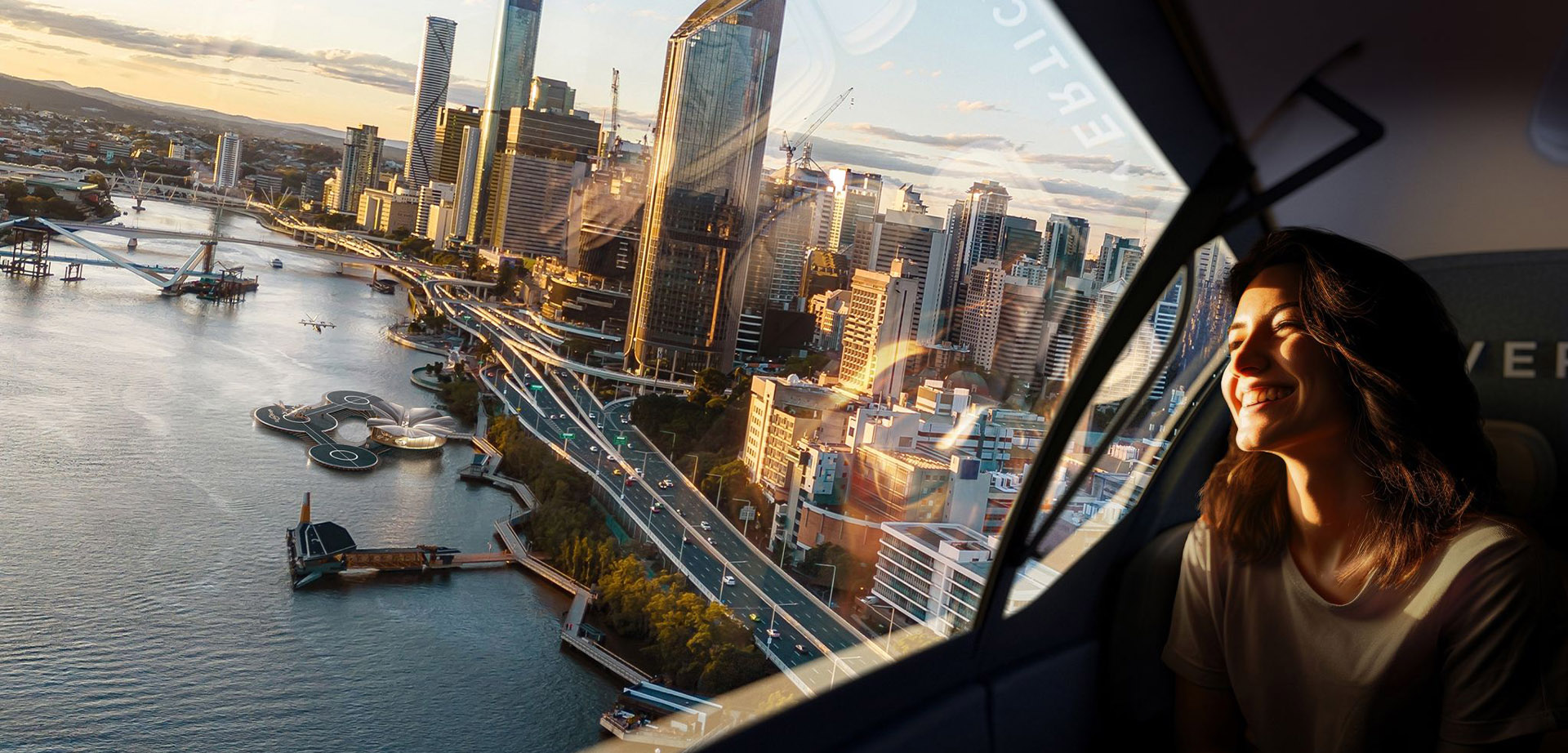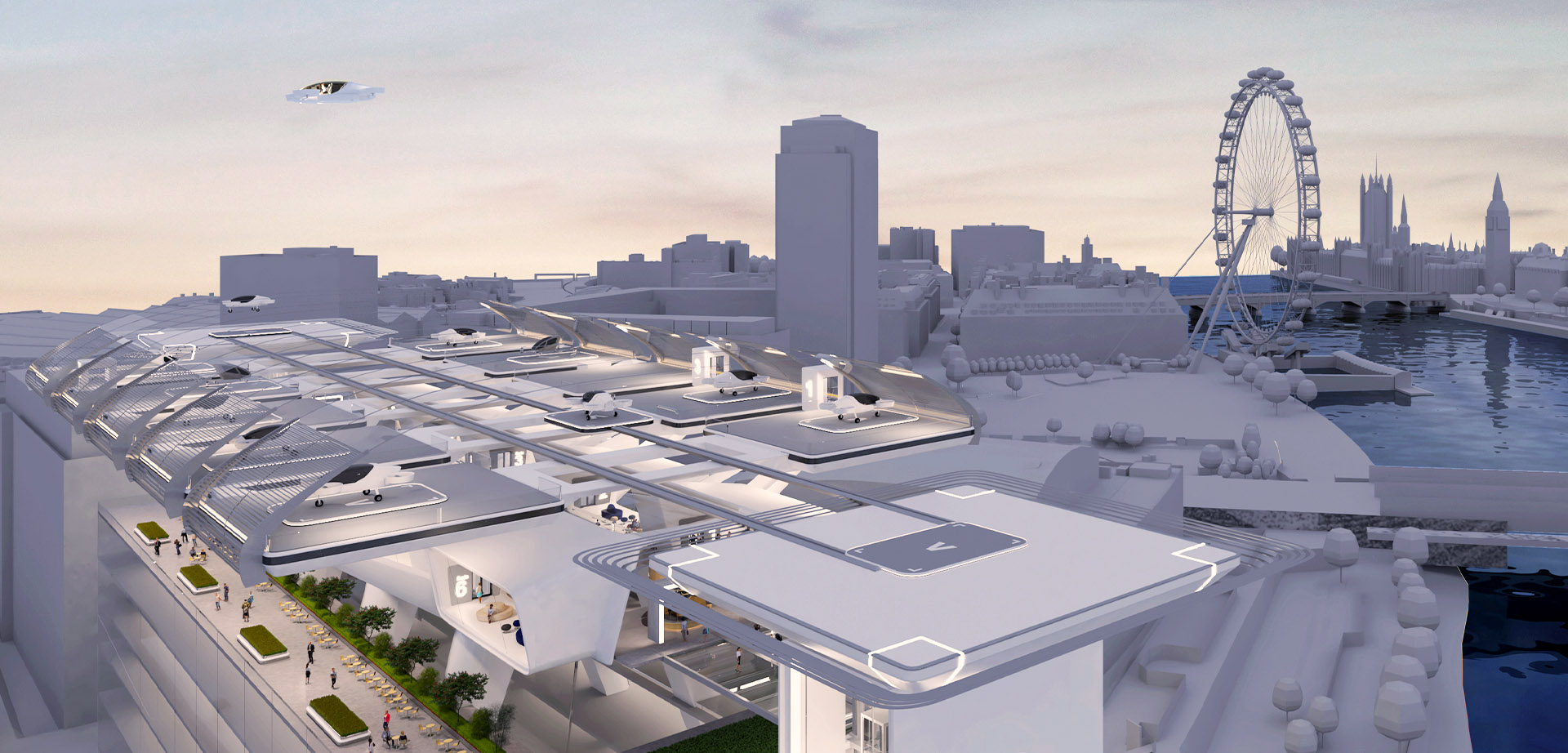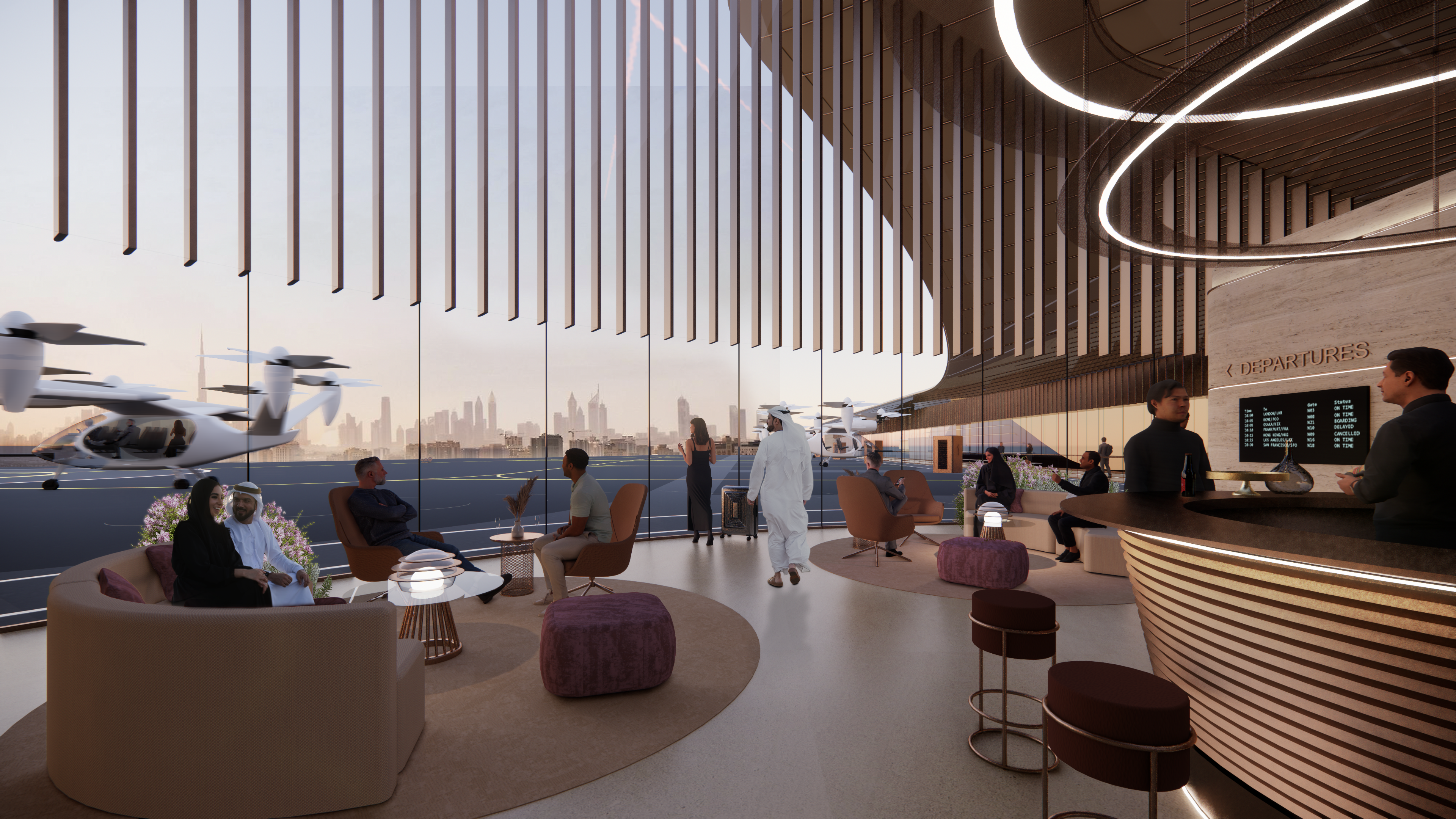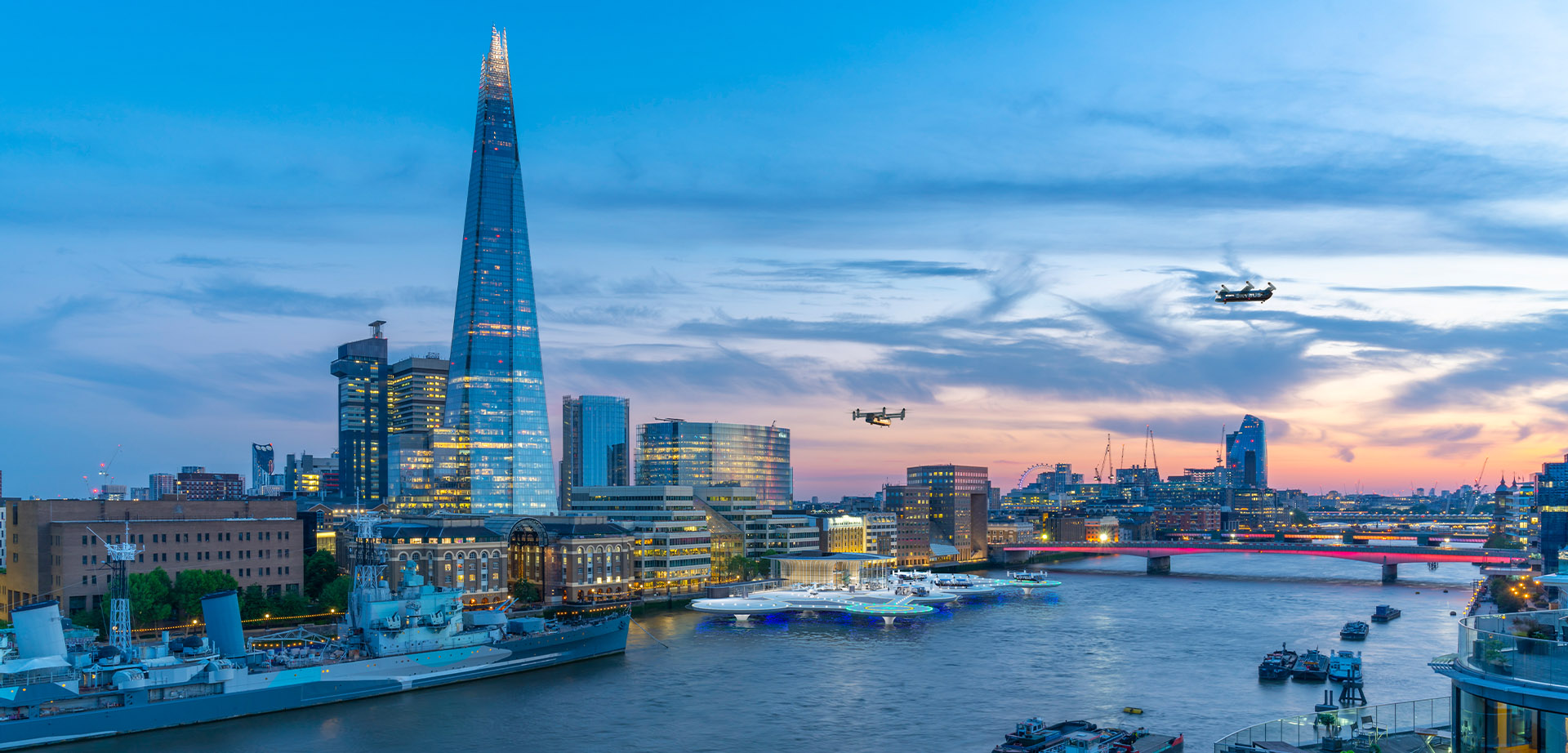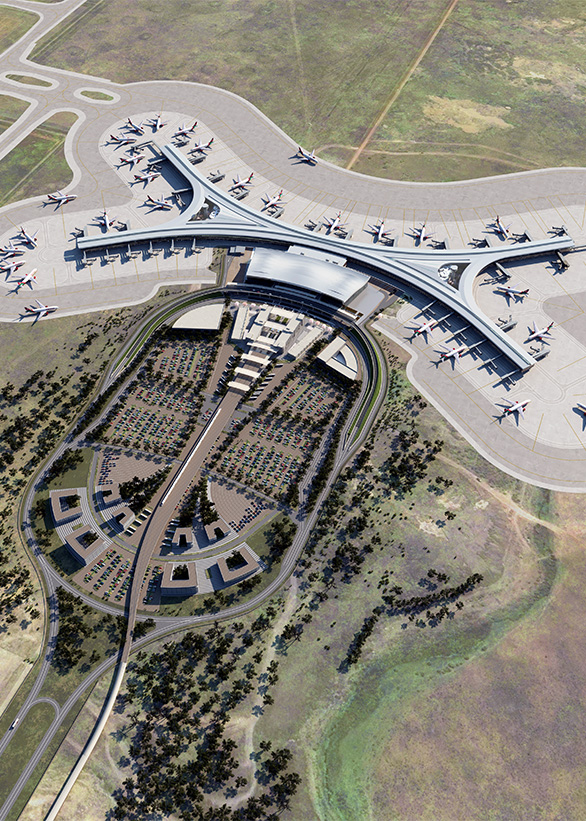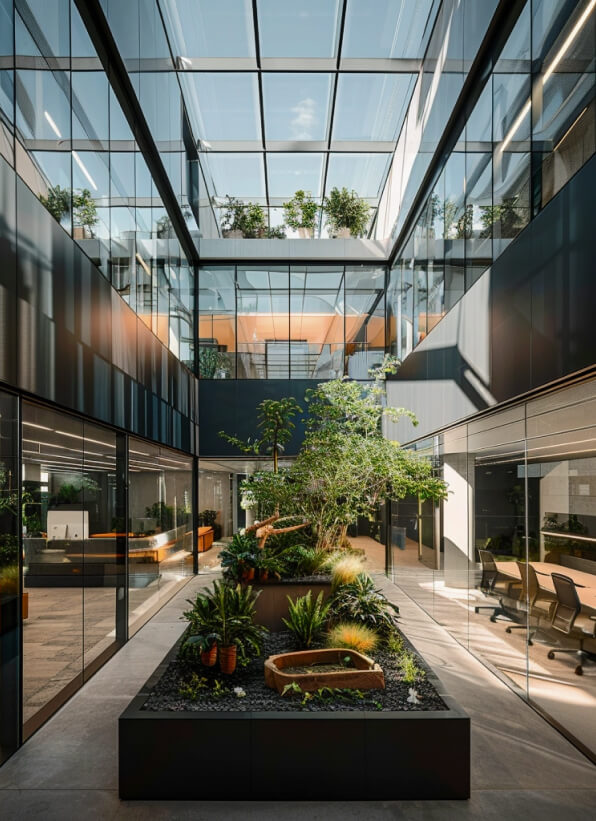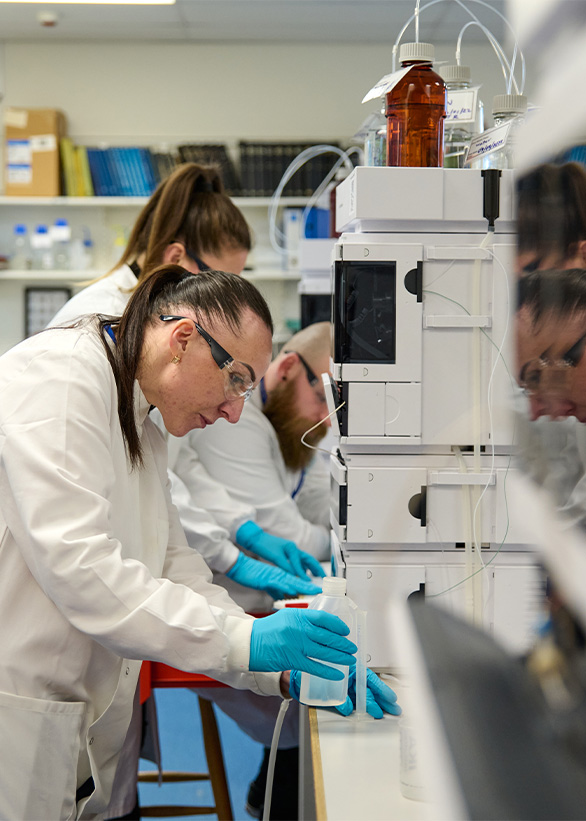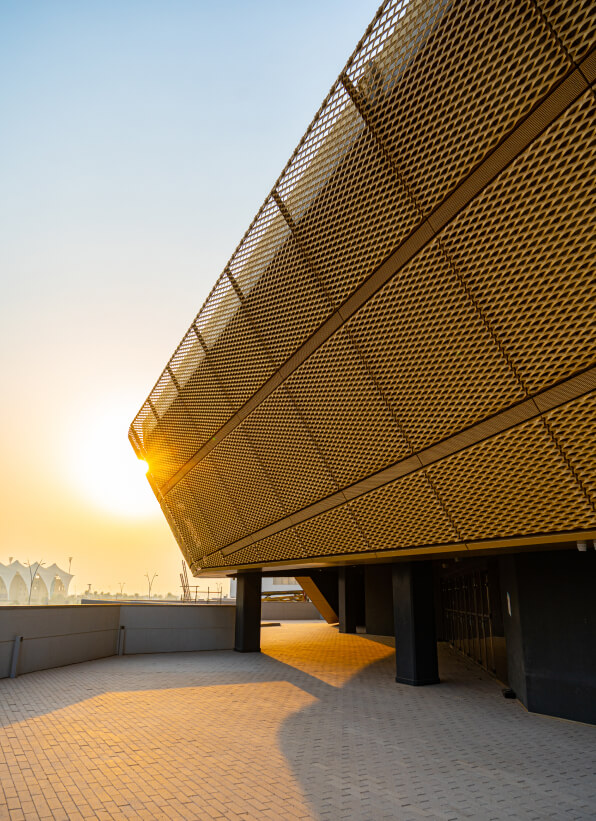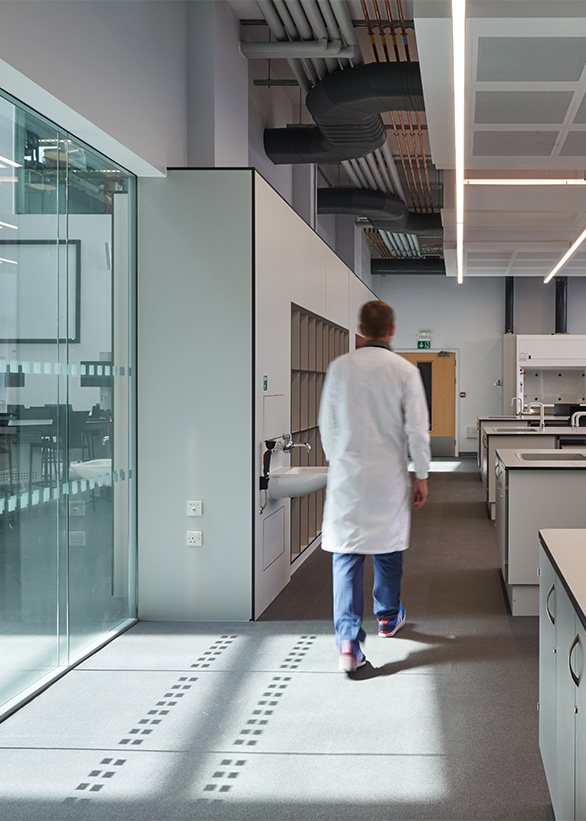Advanced Air Mobility
Unlocking the Potential of Sustainable Short-Distance Air Travel
The move towards sustainable transport, in all aspects of society, is an inevitable and necessary change and is being echoed by developments in the aviation industry, an industry heavily criticised for its own carbon emissions.
Not only is the technology being challenged, but also the service provided. Airlines have traditionally erred towards medium to long haul travel in increasingly larger aircraft, as dictated by their commercial models, and bringing the benefit of low cost ‘travel for all’.
Whilst travelling between countries and over long distances has been effectively realised, and with changing technology will inevitably become sustainable, the market for short distance air travel currently has an unrealised potential.
Years ago Pascall+Watson saw the huge potential of advanced air mobility (AAM) and are now positioned to offer both innovative design thinking and a highly reliable technical partnership for the brave new world of AAM infrastructure.
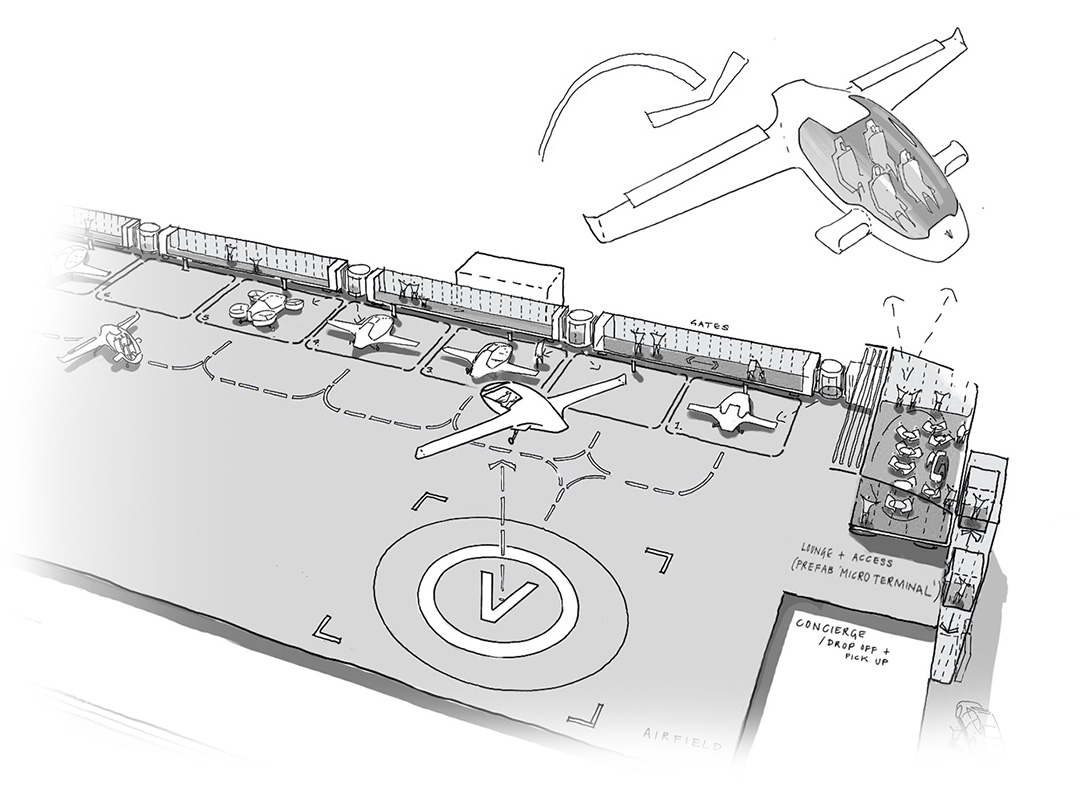
research + development
With most major cities in the world being situated on rivers or lakes, and air corridors traditionally sited above these waterways (for reasons relating to public safety and noise), the development of a water-borne eVTOL terminal is an obvious scenario for investigation. These sites also respond to limited urban land availability and the high cost of any land associated with urban environments.
Water-borne sites also offer the possibility of tidal power generation, good access to solar and wind power generation, and the possibility of heat exchange using the water body in limited circumstances.
Water-bourne Vertiports
The association of non-aeronautical functions with AAM vertiports is challenging, due to the simple fact that the need case for any urban AAM relies more heavily on the speed of end-to-end journey when compared to other more traditional forms of road, rail and aviation transport.
Without extensive dwell time, vertiports must find ways to make more of less with regards to revenue streams outside of their core activities. One could look to more specific siting opportunities, such as urban sites offer key river or rooftop views for F&B/function spaces that are unrelated to the passenger operations, or to tourist flights outside of the commuter peak periods when vehicles are under-utilised (and where not undergoing a primary battery recharge at nights), for example.
Non-aeronautical revenues
The journey of the future is touch-free and seamless, reducing any waiting or requisite contact time, and encompassing technologies either recently developed or currently being developed.
In reducing the wait times for any AAM passenger it is necessary that as much of the process of enrolment, registration, or pre-authorisation occur at the passenger’s own convenience prior to engaging with any infrastructure. This includes online pre-booking of flights, of baggage pickup at the home or office, and biometric certification and QR codes that can then be used as the single token for access throughout the AAM experience.
Security screening technologies that permit a swift and contactless process are also in development, taking the current wave of CT scanning to a new level where passengers simply walk through a tunnel-like space that has sensors embedded in the walls on either side.
Touch-free journey
Work
LET’S WORK TOGETHER
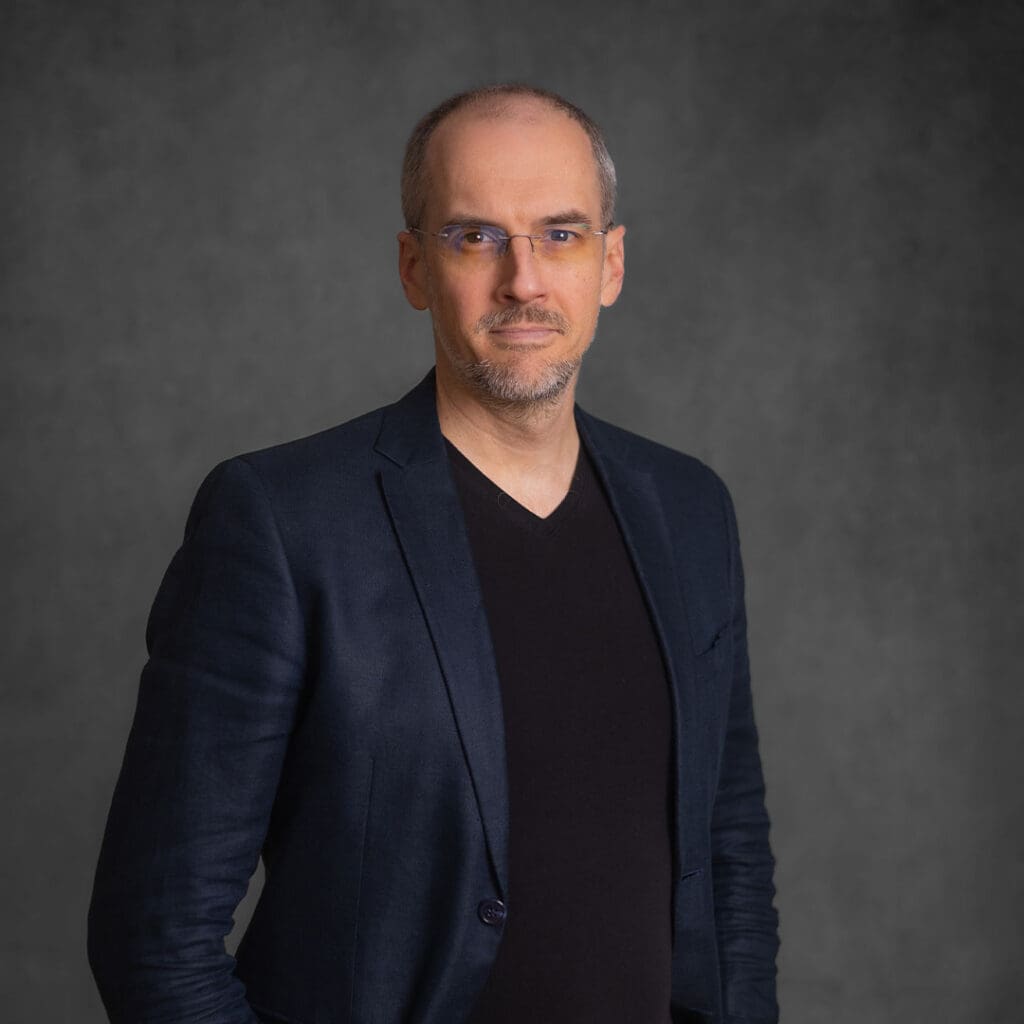
Since 1993, Martin has led some of the world’s largest aviation projects.
He combines exceptional design and technical skills with strong organisational abilities, and delivers innovative solutions in complex environments. He has received numerous national and international design awards for his work across various sectors.

Myles specialises in major infrastructure, transport, commercial, and cultural projects, with a focus on design management and interdisciplinary coordination.
Since entering the industry, he has gained extensive international experience in airport design and has been involved in all project phases, from design to construction. His strengths lie in stakeholder communication, on-site coordination with consultants, and attention to detail, ensuring successful project delivery.
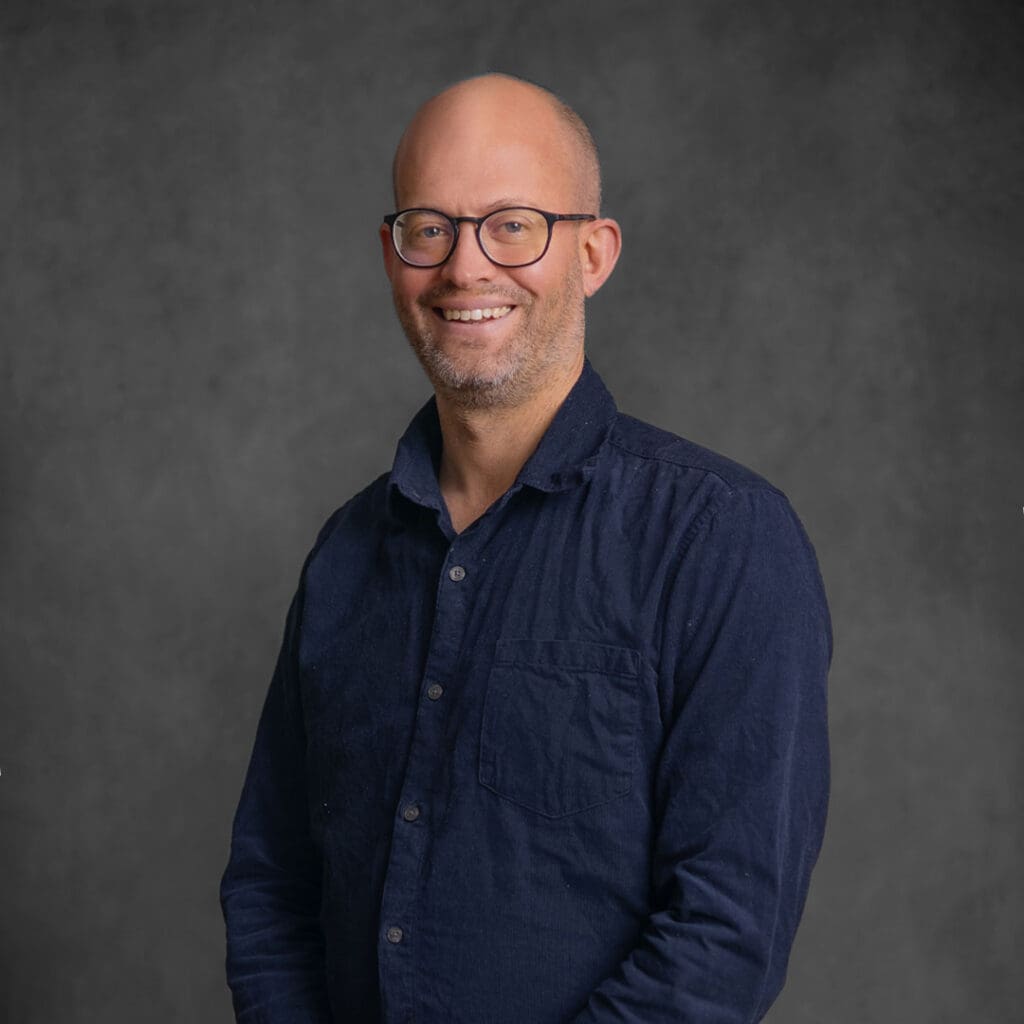
Nick develops designs incorporating new technologies while tailoring to clients’ business models.
Among his practice since 2008, he has a specialist interest in Advanced Air Mobility, with experience designing vertiports in the UK, Middle East, and USA. Nick’s innovative approach ensures that his designs respond to the latest industry advancements while meeting the specific needs of each client.
